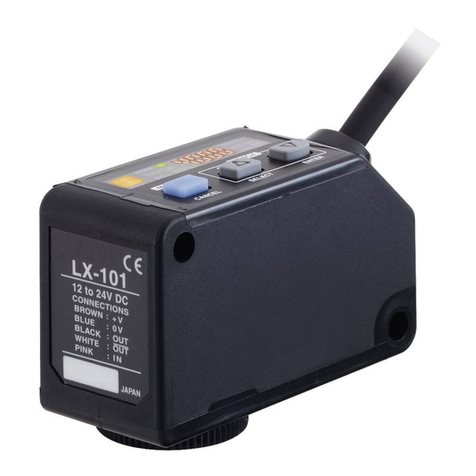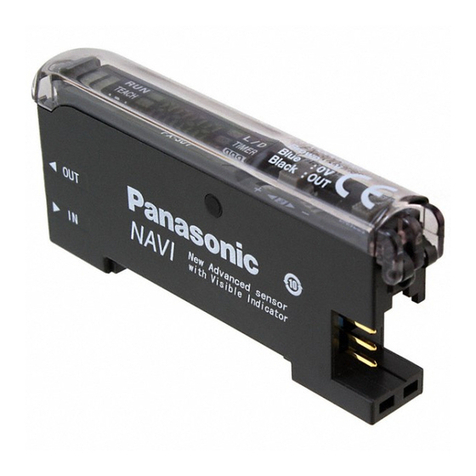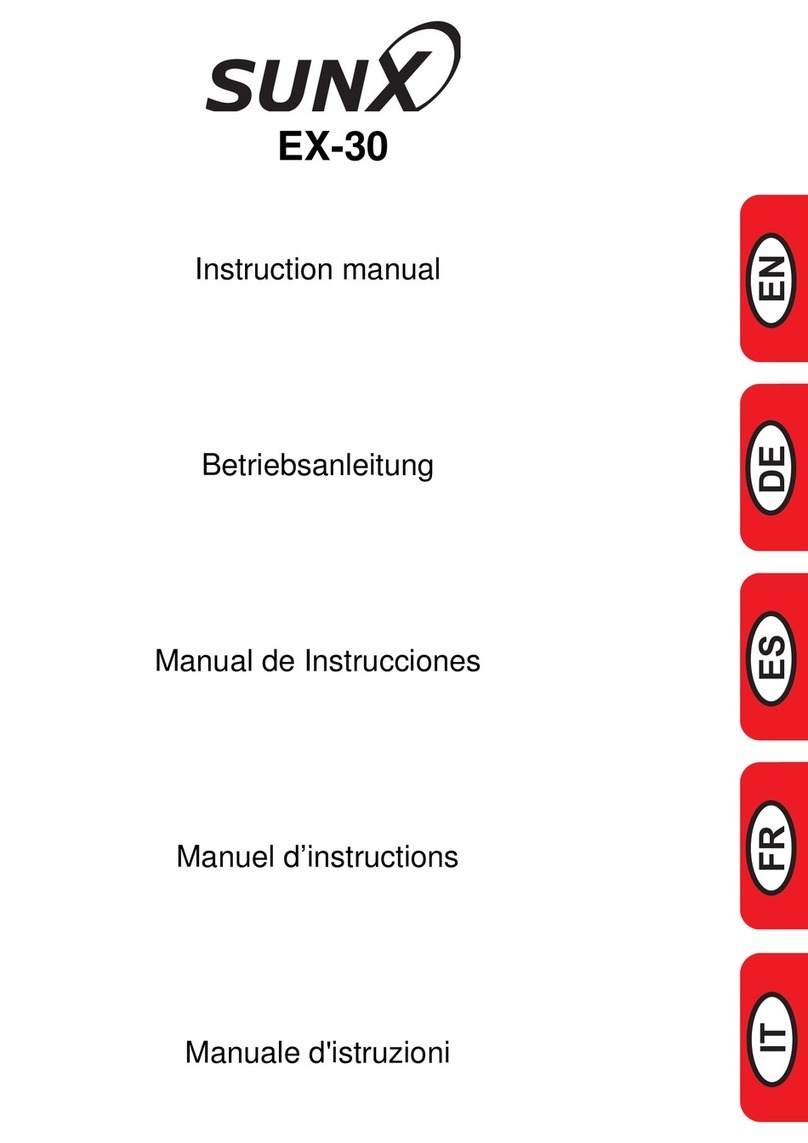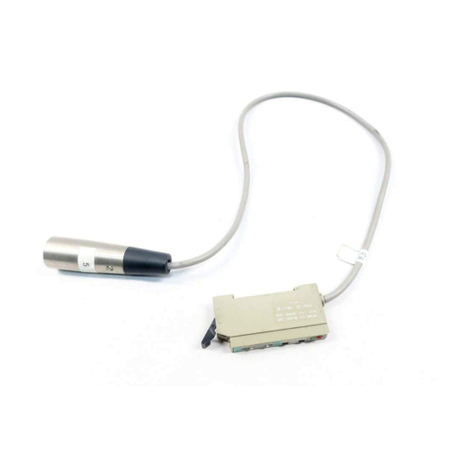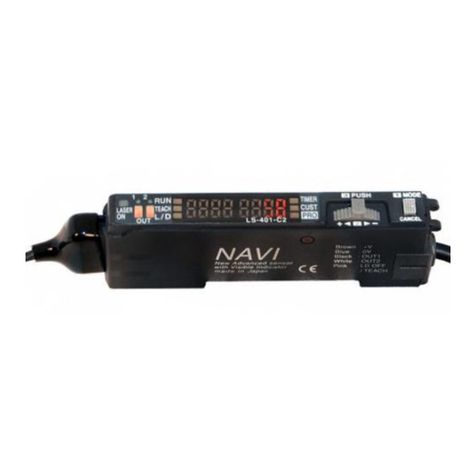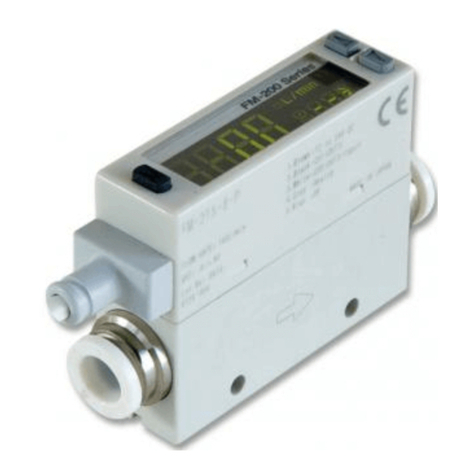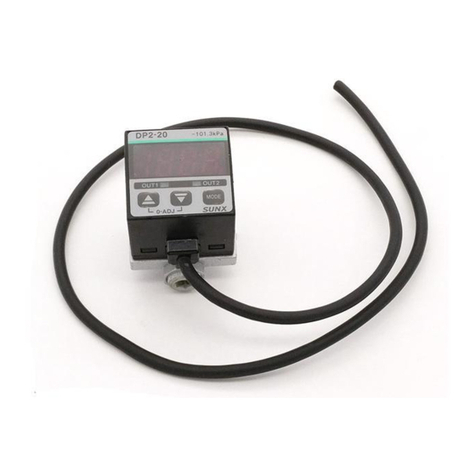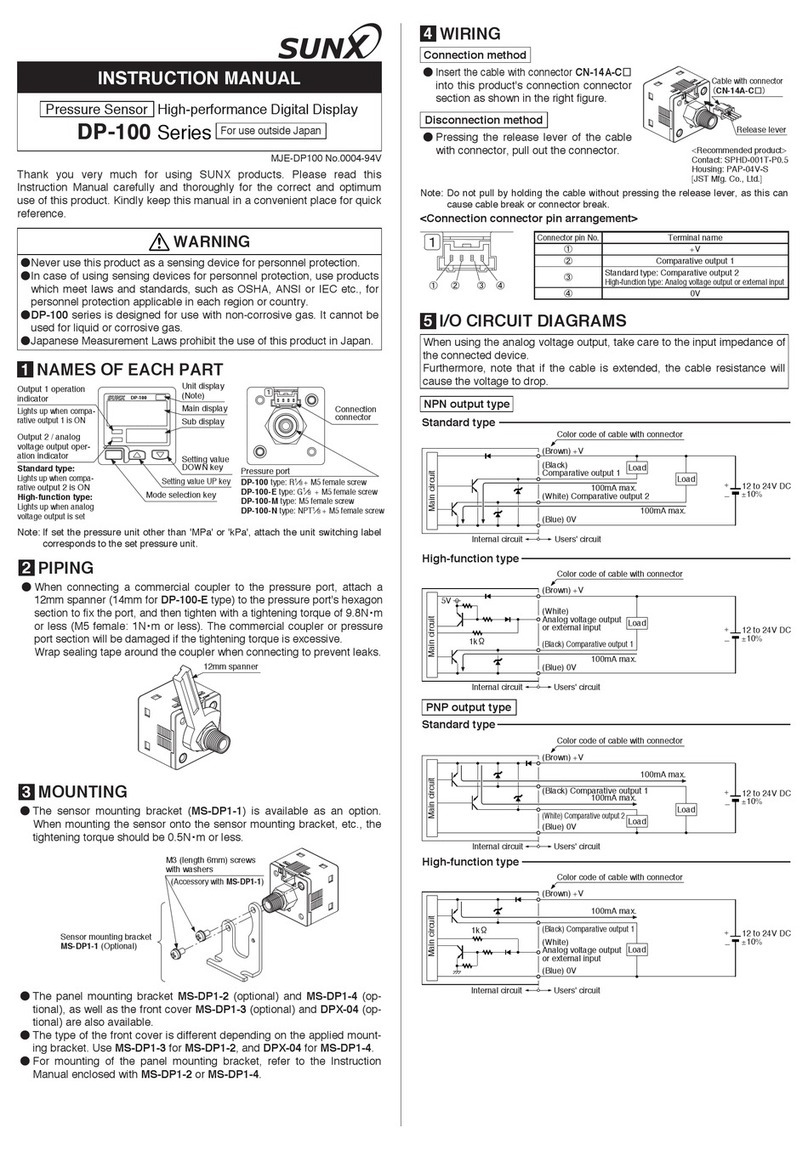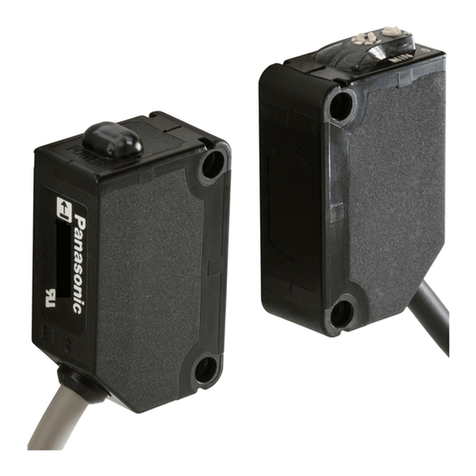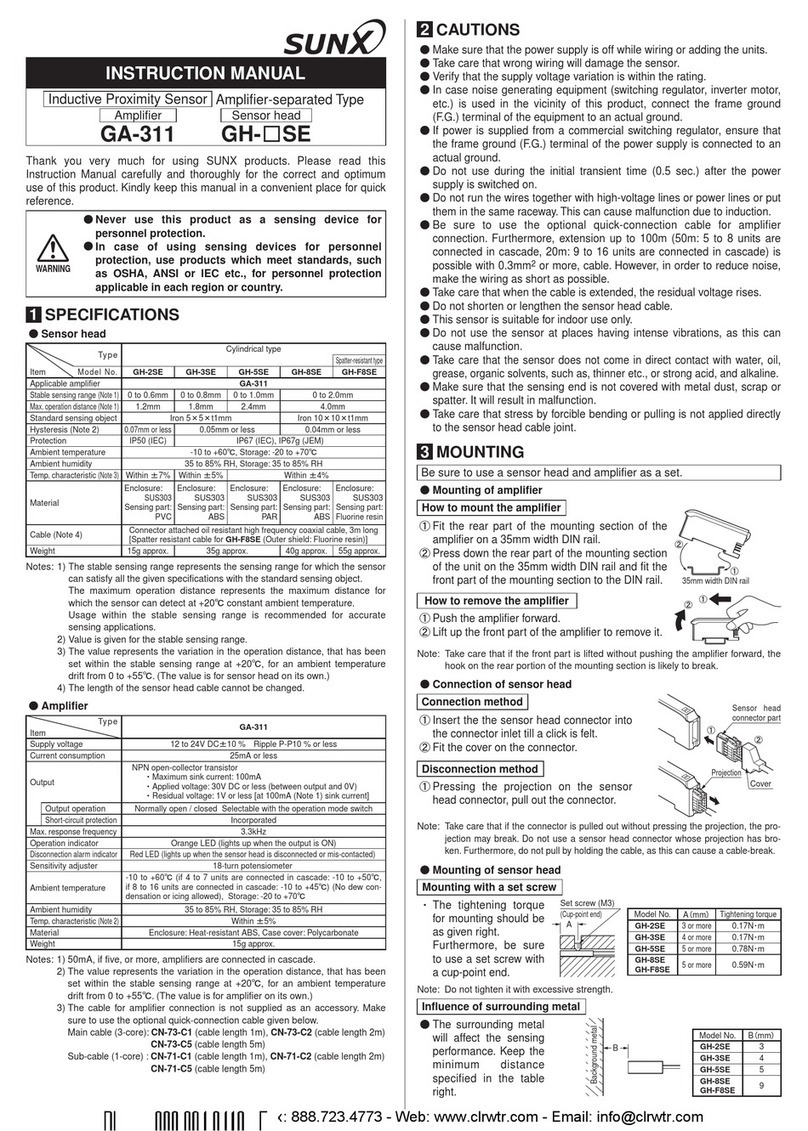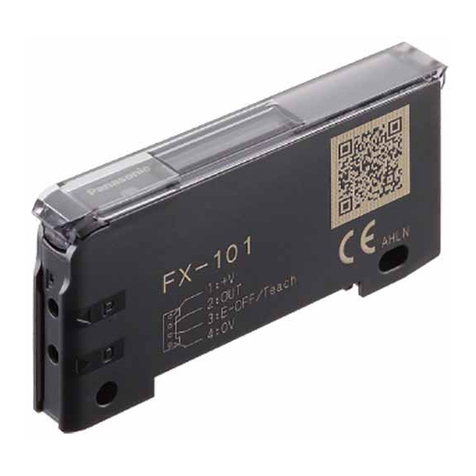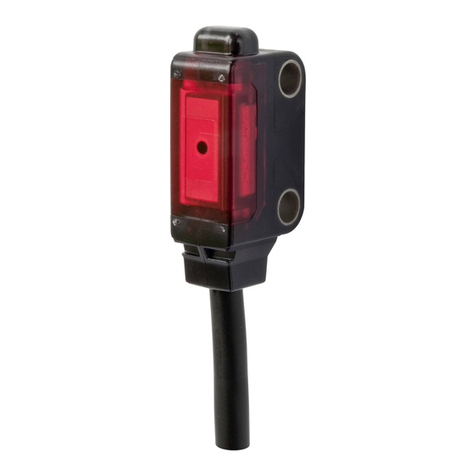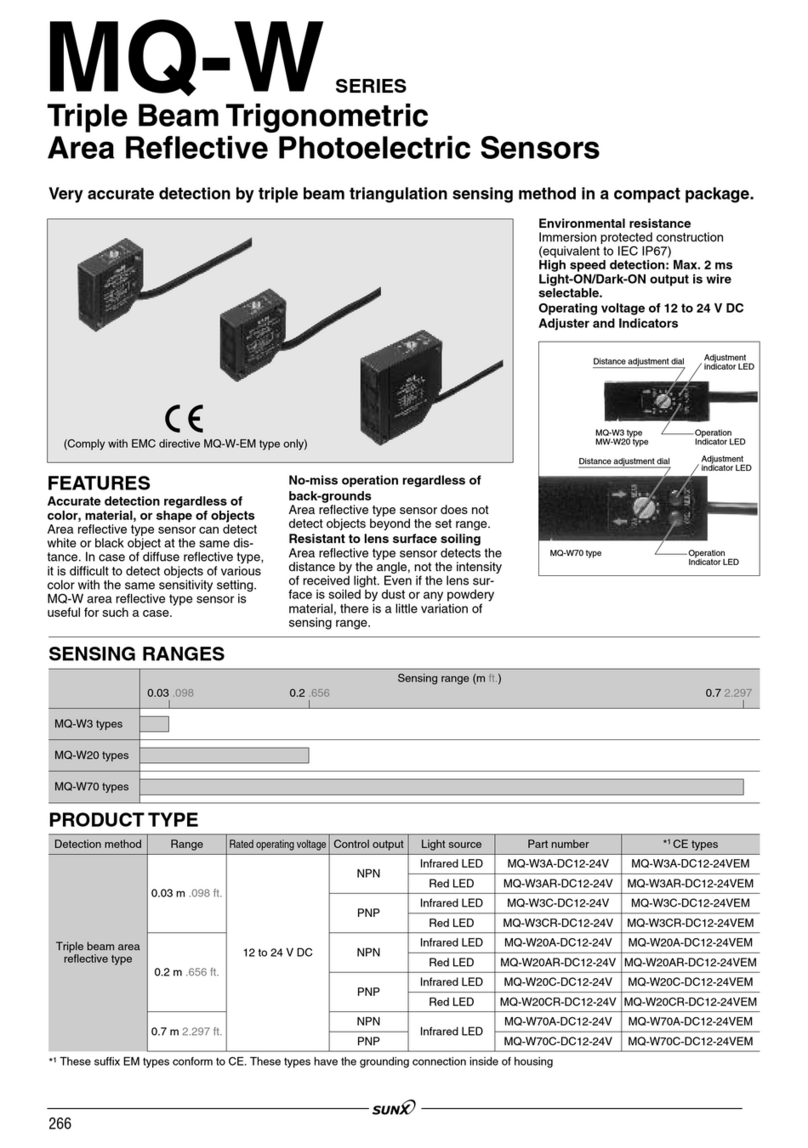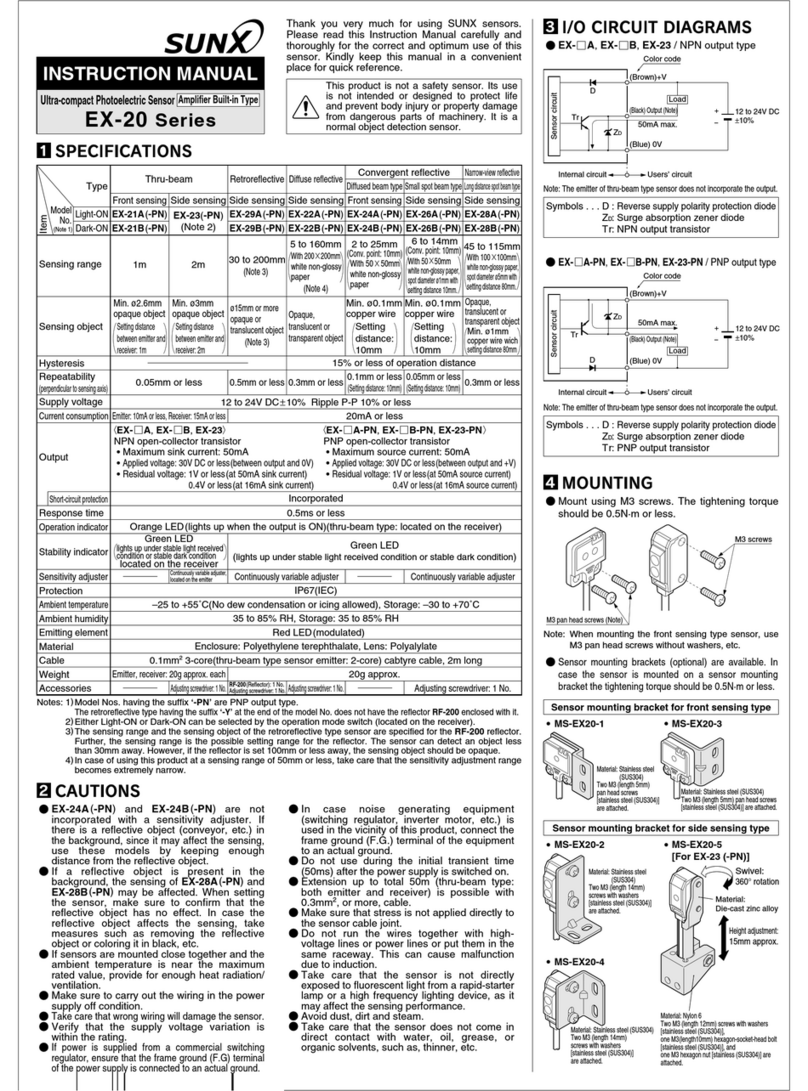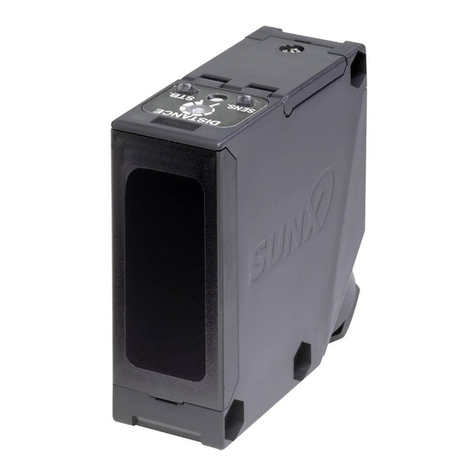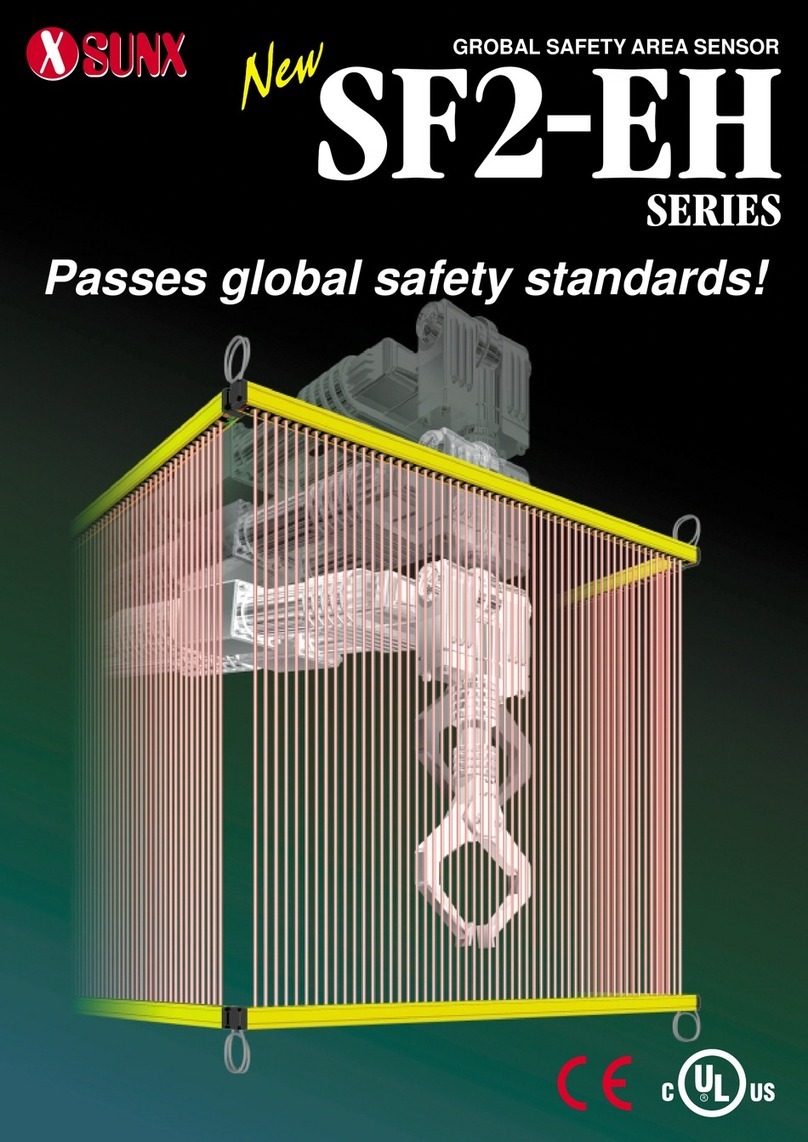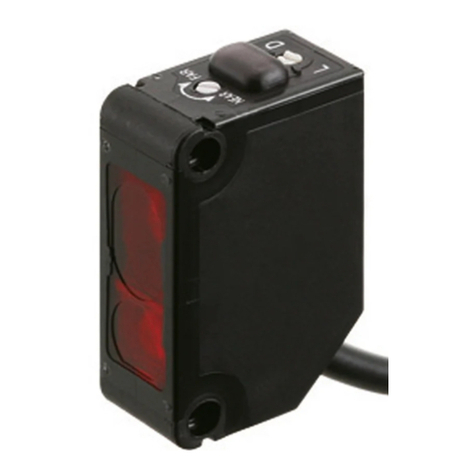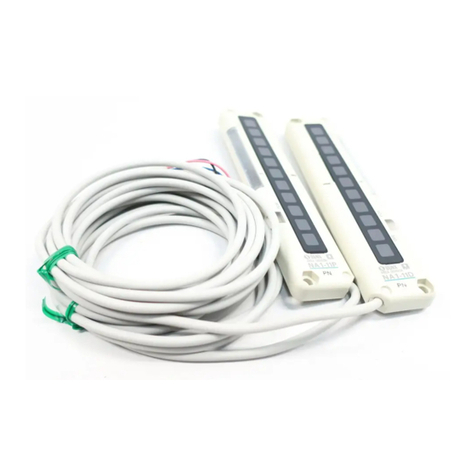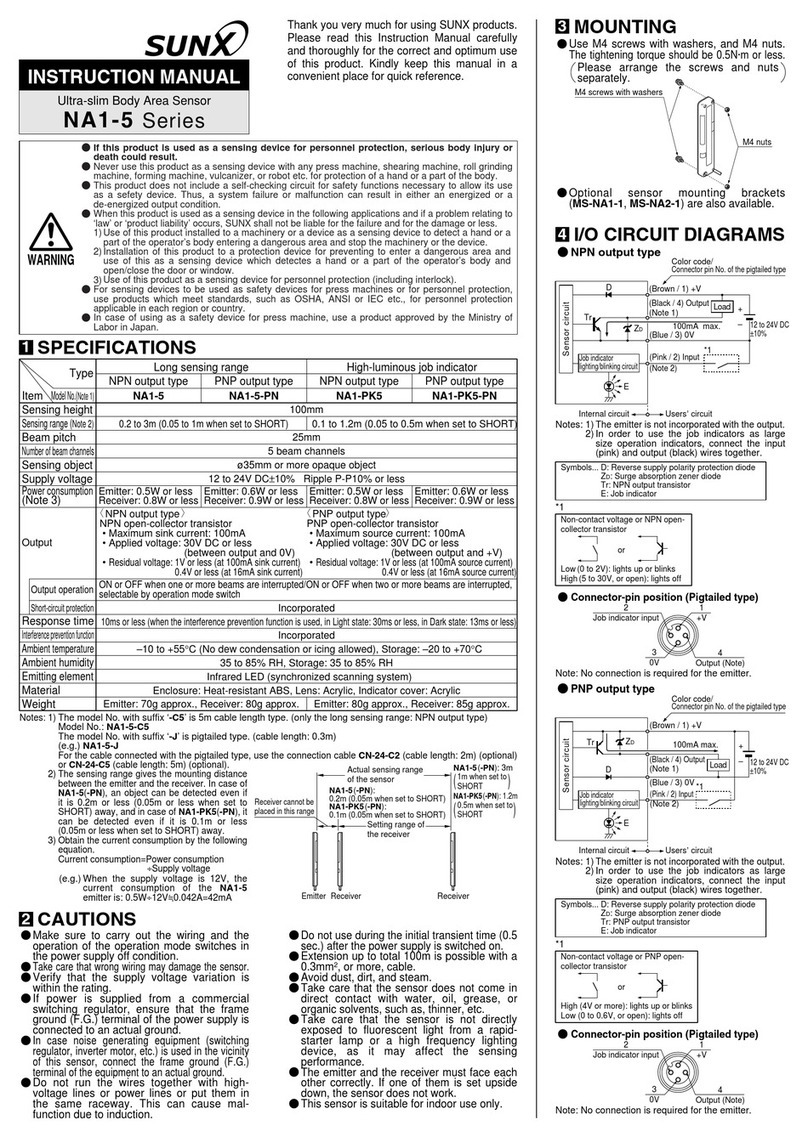Compact-size Picking Sensor
NA1-PK3 Series
Thank you very much for using SUNX products.
Please read this Instruction Manual carefully and
thoroughly for the correct and optimum use of this
product. Kindly keep this manual in a convenient
place for quick reference.
Notes: 1)
2)
Notes: 1)
2)
The model No. with suffix ‘-J’ is pigtailed type. (cable length: 0.3m)
Model No. NA1-PK3(-PN)-J
For the cable connected with the pigtailed type, use the connection cable CN-24-C2 (cable length: 2m)
(optional) or CN-24-C5 (cable length: 5m) (optional).
For details, please refer to ‘ INTERFERENCE PREVENTION FUNCTION’.
49.2mm
30 to 300mm
24.6mm
3 beam channels
ø29mm or more opaque object
12 to 24V DC ±10% Ripple P-P 10% or less
Emitter: 30mA or less, Receiver: 50mA or less
NPN open-collector transistor
ON or OFF when one or more beam channels are interrupted, selectable by a switch
Incorporated
10ms or less (when interference prevention is used: 30ms or less)
Power indicator: Green LED (lights up when the power is ON)
Job indicator: Orange LED (lights up when the job indicator input is LOW)
Operation indicator: Red LED (lights up when the output is ON)
Stable incident beam indicator: Green LED:
(lights up when the all beams are stably received)
Job indicator: Orange LED (lights up when the job indicator input is LOW)
Power indicator: Green LED (lights up when the power is ON)
Job indicator: Orange LED (lights up when the job indicator input is HIGH)
Operation indicator: Red LED (lights up when the output is ON)
Stable incident beam indicator: Green LED:
(lights up when the all beams are stably received)
Job indicator: Orange LED (lights up when the job indicator input is HIGH)
Incorporated (Up to 3 units can be closely mounted) (Note 2)
–10 to +55°C (No dew condensation or icing allowed), Storage: –20 to +70°C
35 to 85% RH, Storage: 35 to 85% RH
Infrared Red LED (synchronized scanning system)
Enclosure: Heat-resistant ABS, Lens cover: Acrylic, Display cover: Acrylic
0.2mm24-core (emitter: 3-core)
oil resistant cabtyre cable, 2m long
0.2mm24-core (emitter: 3-core)
oil resistant cabtyre cable, 5m long
0.2mm24-core (emitter: 3-core)
oil resistant cabtyre cable, 2m long
0.2mm24-core (emitter: 3-core)
oil resistant cabtyre cable, 5m long
Emitter: 50g approx., Receiver: 50g Emitter: 50g approx., Receiver: 50g
NA1-PK3
2m cable length type NA1-PK3-PN
2m cable length type
NA1-PK3-C5
5m cable length type NA1-PK3-PN-C5
5m cable length type
Emitter: 105g approx., Receiver: 110g Emitter: 105g approx., Receiver: 110g
NPN output PNP output
Item
Sensing height
Response time
Indicators
Sensing range
Output operation
Emitter
Receiver
Short-circuit protection
Beam pitch
Number of beam channels
Sensing object
Supply voltage
Current consumption
Interference prevention function
Ambient temperature
Ambient humidity
Emitting element
Material
Cable
Weight
Output
Model No. (Note 1)
Type
Make sure to carry out the wiring and operation
of the selection switch in the power supply off
condition.
Take care that wrong wiring may damage the
sensor.
Verify that the supply voltage variation is within
the rating.
If power is supplied from a commercial switching
regulator, ensure that the frame ground (F.G.)
terminal of the power supply is connected to an
actual ground.
Do not use during the initial transient time (0.5
sec.) after the power supply is switched on.
In case noise generating equipment (switching
regulator, inverter motor, etc.) is used in the vicinity
of the sensor, connect the frame ground (F.G.)
terminal of the equipment to an actual ground.
Extension up to total 100m is possible with
0.3mm2, or more, cable for both emitter and
receiver. However, in order to reduce noise,
make the wiring as short as possible.
Do not run the wires together with high-voltage lines
or power lines or put them in the same raceway.
This can cause malfunction due to induction.
Take care that the sensor is not directly exposed to
fluorescent light from a rapid-starter lamp or a high
frequency lighting device, as it may affect the
sensing performance.
Avoid dust, dirt, and steam.
Take care that the product does not come in direct
contact with water, oil, grease or organic solvents,
such as, thinner, etc.
Make sure to use an isolation transformer for the
DC power supply. If an auto-transformer (single
winding transformer) is used, this product or the
power supply may get damaged.
In case a surge is generated in the used power
supply, connect a surge absorber to the supply
and absorb the surge.
The emitter and the receiver must face each other
correctly. If they are set upside down, the sensor
does not work.
In order to turn the switches, a 'minus' screwdriver
is required. (The blade should be 2.5 0.6mm or
less)
This sensor is suitable for indoor use only.
INSTRUCTION MANUAL
Use M4 screws with washers and M4 nuts. The
tightening torque should be 0.5N·m or less.
The sensor protection bracket (MS-NA3-3)
(optional) is also available.
Insert the sensor protection
bracket (MS-NA3-3) from
upwards of the sensor body,
and match the position of the
mounting holes of the sensor
body and the sensor protec-
tion bracket (MS-NA3-3).
Mount with the M4 screws
with washers and the M4 nuts
enclosed with the sensor
protection bracket (MS-NA3-3).
The tightening torque should
be 0.5N·m or less.
Mounting method
Sensor protection
bracket (MS-NA3-3)
(optional)
M4 screws
with washers
M4 nuts
(Blue / 3) 0V
(Pink / 2) Job
indicator input 1
1
Job indicator
lighting circuit
Sensor circuit
+
–
12 to 24V DC
±10%
D
Users’ circuitInternal circuit
(Brown / 1)+V
Load
(Black / 4)
Output (Note 1)
(Note 2)
100mA max.
ZD
Tr
D
ZD
Tr
E
Non-contact voltage or
NPN open-collector transistor
Low (0 to 2V): Lights up
High (5 to 30V, or open): Lights off
or
: Reserve supply polarity protection diode
: Surge absorption zener diode
: NPN output transistor
: Job indicator (IND.)
E
Note: No connection is required for the emitter.
Color code / Connector pin No.
of the pigtailed type
Connector-pin position (Pigtailed type)
NPN output type
1
+V
2
Job indicator input
4
Output (Note)
3
0V
If this product is used as a sensing device for personnel protection, serious body injury or
death could result.
Never use this product as a sensing device with any press machine, shearing machine, roll grinding
machine, forming machine, vulcanizer, or robot etc. for protection of a hand or a part of the body.
This product does not include a self-checking circuit for safety functions necessary to allow its use
as a sefety device. Thus, a system failure or malfunction can result in either an energized or a
de-energized output condition.
When this product is used as a sensing device in the following applications and if a problem relating to
‘law’ or ‘product liability’ occurs, SUNX shall not be liable for the failure and for the damage or less.
1)
2)
3)
For sensing devices to be used as safety devices for press machines or for personnel protection,
use products which meet standards, such as OSHA, ANSI or IEC etc., for personnel protection
applicable in each region or country.
In case of using as a safety device for press machine, use a product approved by the Ministry of
Labor in Japan.
Use of this product installed to a machinery or a device as a sensing device to detect a hand or a
part of the operator’s body entering a dangerous area and stop the machinery or the device.
Installation of this product to a protection device for preventing to enter a dangerous area and
use of this as a sensing device which detectes a hand or a part of the operator’s body and
open/close the door or window.
Use of this product as a sensing device for personnel protection (including interlock).
WARNING
SPECIFICATIONS
1
Maximum sink current: 100mA
Applied voltage: 30V DC or less (between output and 0V)
Residual voltage: 1V or less (at 100mA sink current)
0.4V or less (at 16mA sink current)
PNP open-collector transistor
Maximum source current: 100mA
Applied voltage: 30V DC or less (between output and +V)
Residual voltage:
1V or less (at 100mA source current)
0.4V or less (at 16mA source current)
CAUTIONS
2
MOUNTING
3
I/O CIRCUIT AND WIRING DIAGRAMS
4
The output is not incorporated in the emitter.
When the job indicator is used as a large size
operation indicator, connect the job indicator
input wire (pink) of the emitter and receiver to the
output wire (black) of the receiver.
Symbols...
Please arrange the screws and the nuts
separately.
